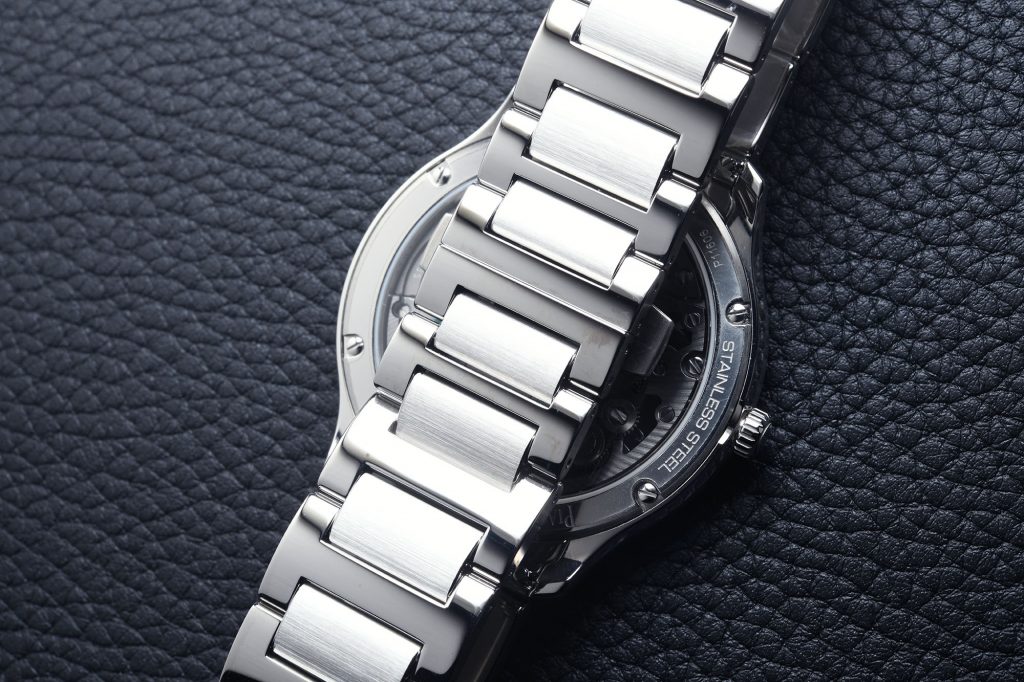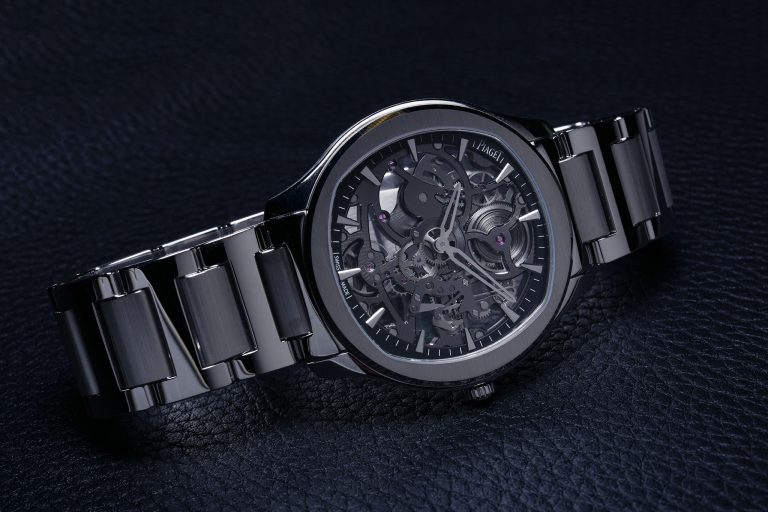With the global shift to casual chic fashion and streetwear, the luxury sports watch is alive and well in 2021. This year, Piaget evolves their Polo collection with the Piaget Polo Skeleton – a watch that combines the stainless steel sports watch with one of their core competencies: ultra-thin skeletonised movements.

Sport watches combined with High Horology is a little bit of an oxymoron in the world of watches – traditionally being very much polar opposites. However, it can be said that from the 70s onwards, we saw the beginnings of this division between sports watches and luxury watches being blurred with the concept of the stainless steel luxury sports watch – for those who may want their watches whilst on their yacht in Monaco, rather than a utility for survival to reach the summit of the Matterhorn. Over the past few decades as our lifestyles have evolved, the watch industry has seen the practicality of the stainless steel sports watch, and introduced fine watchmaking concepts to these collections.
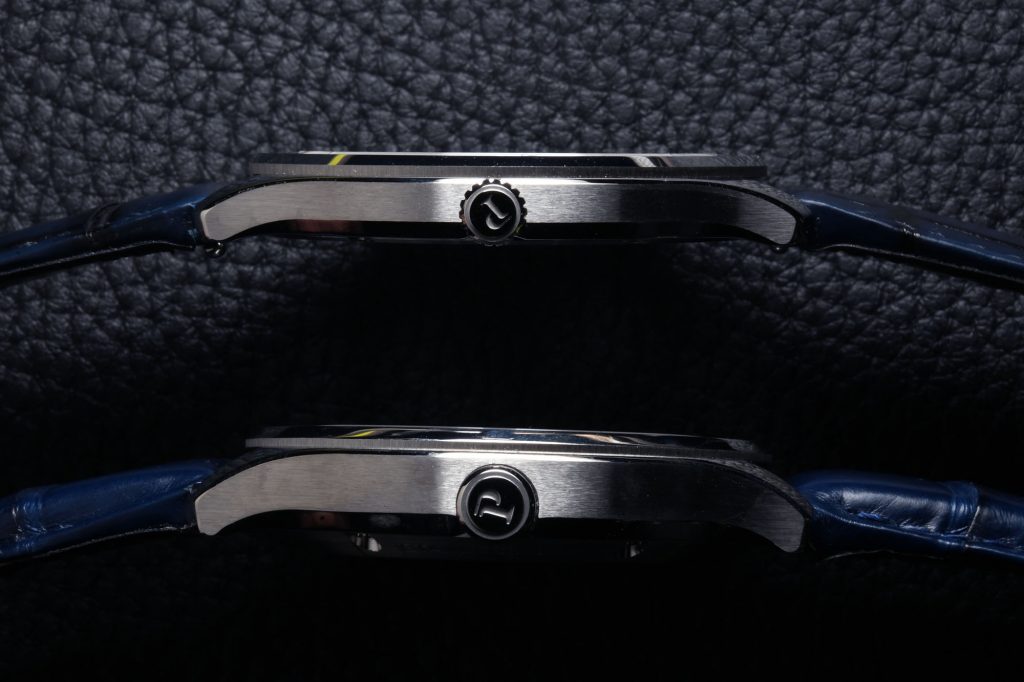
The Piaget Polo Skeleton combines the brand’s expertise in fine calibres with their Polo line of watches – a collection dating back to 1979 that was the maison’s contemporary lifestyle watch. Compared to the currently available Polo watches, the new Polo Skeleton has a much slimmer case profile – measuring 6.5mm in height, which is around 30% thinner. Even with this reduction in case height, the recognisable cushion-shaped opening of the dial residing inside a rounded bezel is still present, giving the Polo Skeleton its signature play on geometry for the wrist.
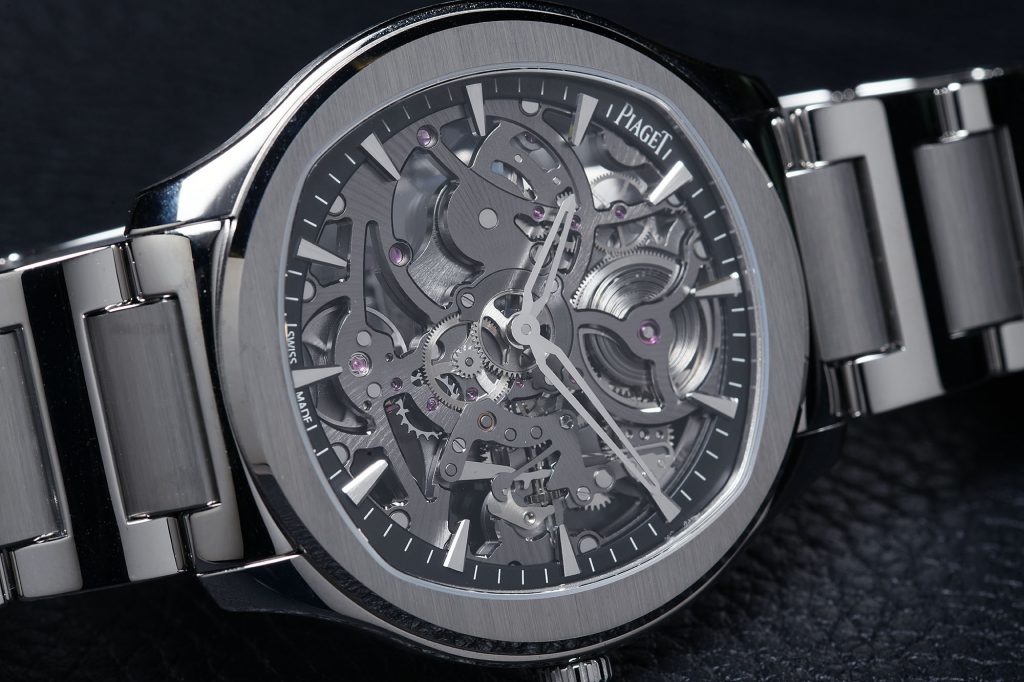
Its stainless steel case is 42mm in diameter, and comes on a bracelet with H-shaped links. This bracelet displays alternate polished and horizontal brushed links, and for this watch, Piaget has developed a special interchanging system via two levers located where the bracelet meets the case. Each watch comes with an interchangeable alligator leather strap, enabling this watch to dress-up or dress-down depending on the occasion and the mood of the wearer. The Polo Skeleton is available in two colours – Blue and Grey, and what is remarkable is that the movement is truly what gives the watch its character.
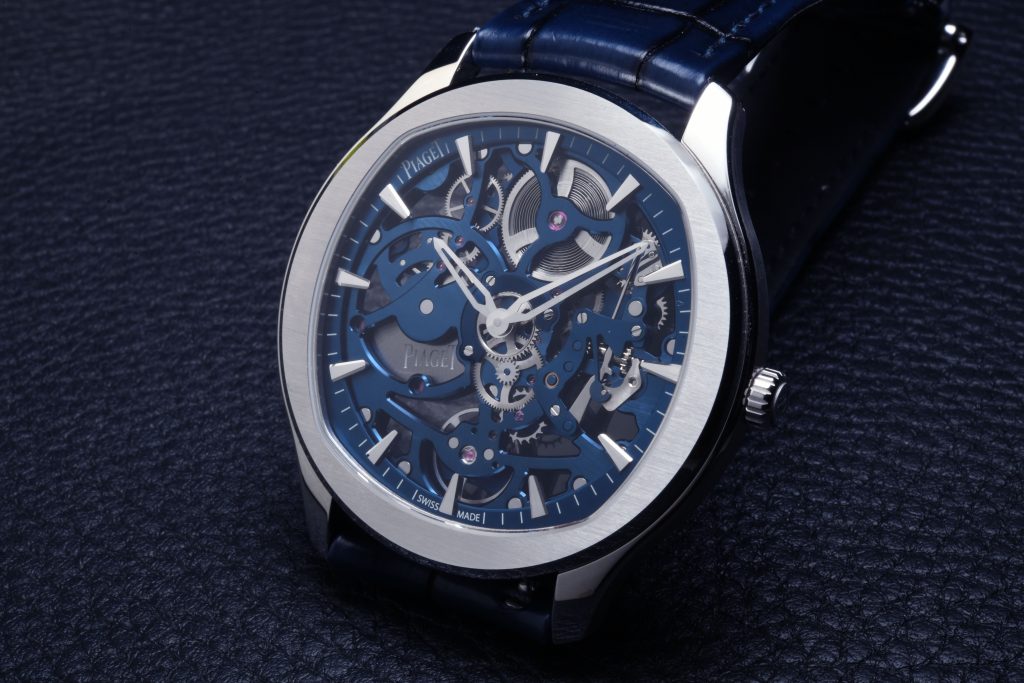
The 1200S remains to this day, one of the thinnest skeletonised movements in regular production in the watchmaking industry and echoes Piaget’s heritage of the ultra thin 12P movement released in 1960. The movement housed within the Polo Skeleton forms the centrepiece of the watch – created at Piaget’s workshops in La Cotes Aux Fees, its plates and bridges coated accordingly to the colour.
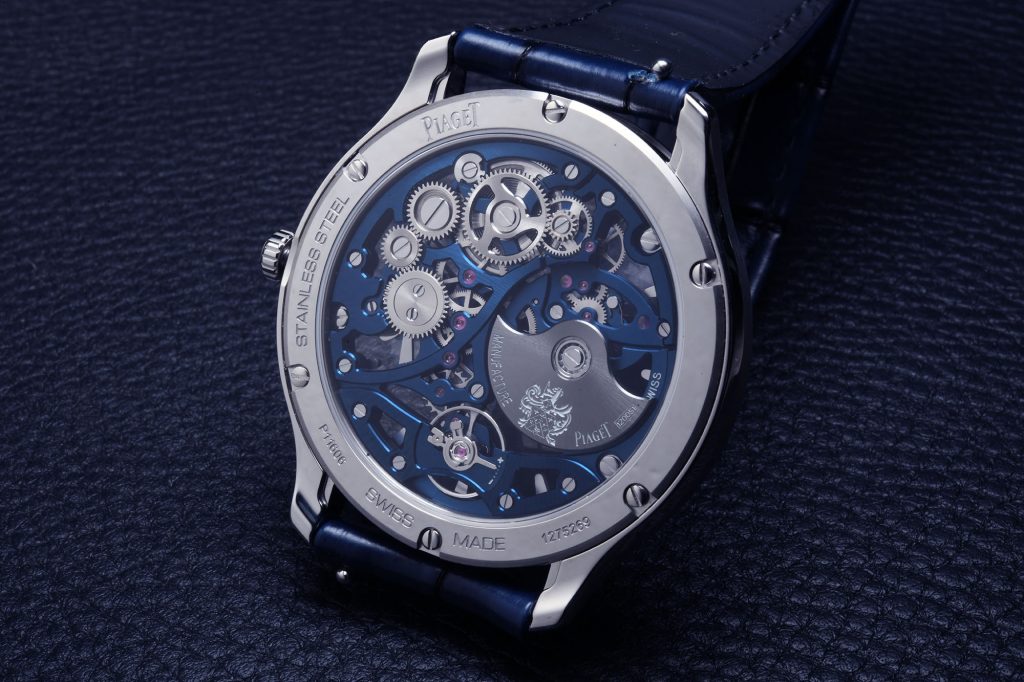
In particular, the blue is a new tone for this movement, achieved by Physical Vapour Deposition (PVD). The 1200S movement displays swooping lines in the shape of its bridges and in the lines of chamfering that accentuate the shape of its components. It is also a mesmerising view into the world of watchmaking mechanics, as the skeletonisation exposes much of the construction of the movement. In keeping with the tradition of the historical 12P calibre, the movement is wound through a micro-rotor that has been executed in platinum, and features the Piaget coat of arms on it – a pertinent reminder of the maison’s extensive heritage in the field of fine watchmaking. This legacy of the ultra-thin was most commonly seen in the Altiplano range, and is now continued in contemporary form in the Polo Skeleton.
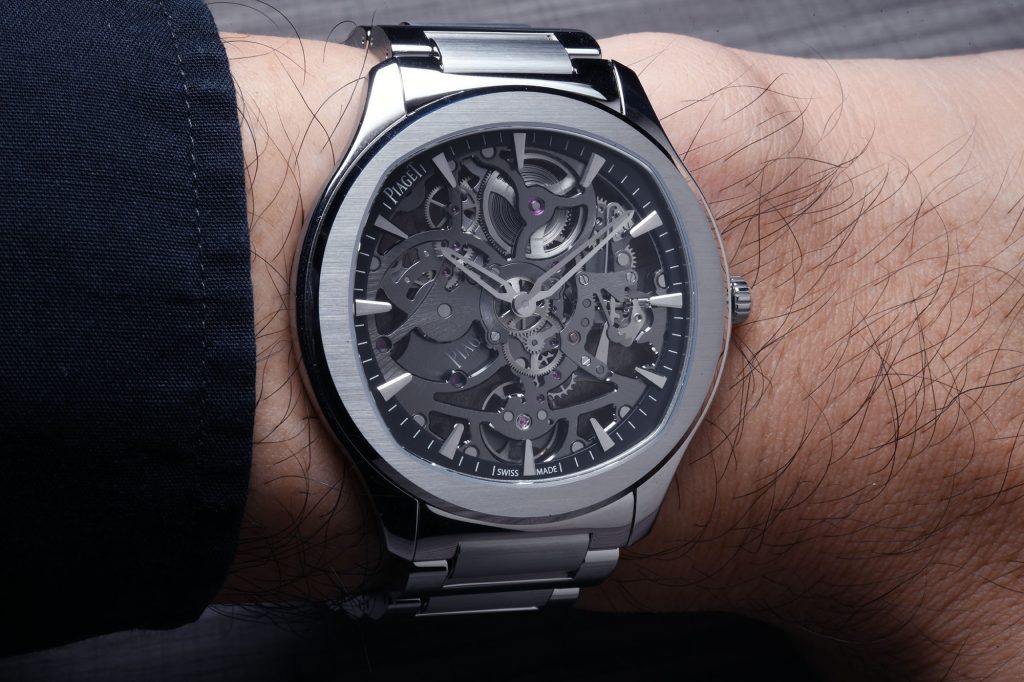
The Piaget Polo collection arrived in the middle of 2016, just when the craze for stainless steel sports watches on bracelets (as well as integrated case and bracelet designs) began. Enthusiasts may have derided this as unoriginal, as it was not originally designed during the 70s, but many other watches with a similar idea have received this unfair treatment as well. The Piaget Polo, then, is a complement to the brand’s much dressier and conservative Altiplano collection, with its casual and sporty design. There are other watches with a similar concept – the Audemars Piguet Royal Oak Double Balance Wheel Openworked and the Bulgari Octo Finissimo. The Royal Oak mentioned here does have the benefit of being the first of its kind, however, it is not really in the same league in terms of thinness, being around 3mm thicker than the Piaget. This leaves the Bulgari Octo Finissimo, its sharp, architectural lines and its ultra-thin, micro-rotor wound movement. Neither the Royal Oak, nor the Octo Finissimo feature interchangeable bracelets without tools – if versatility is what you need, and if you prefer something softer, more restrained and more “Genevan” in its approach to watch design, then there is something compelling in the Piaget Polo Skeleton, and its heritage in its pursuit of elegance and the ultra-thin.
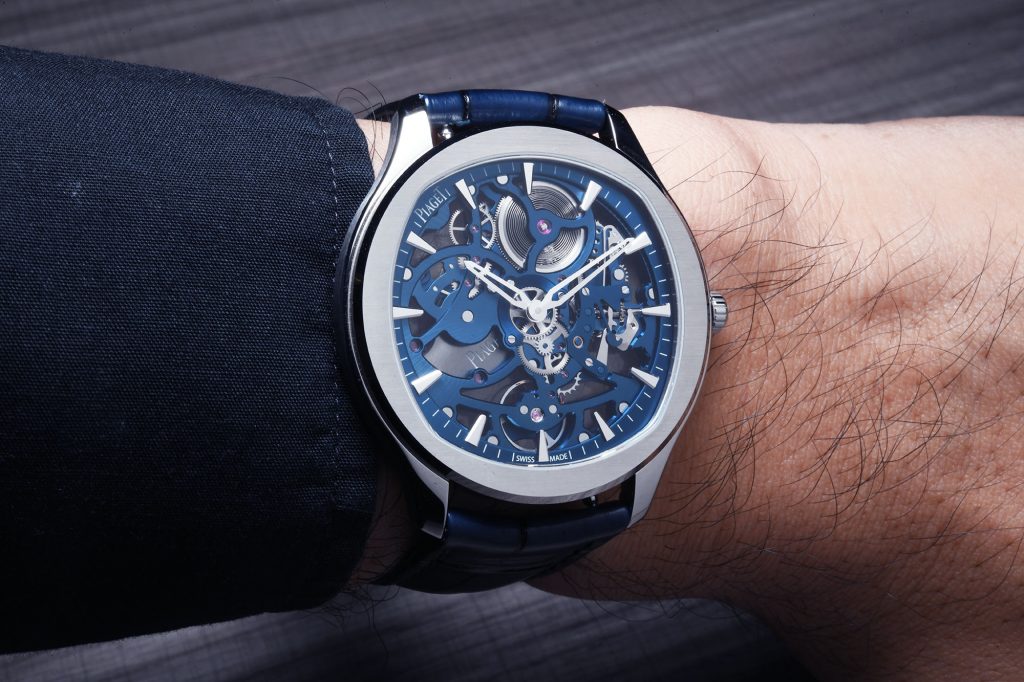
The Piaget Polo Skeleton, then, is a truly remarkable watch – it is a shot fired by a brand to bring their fine watchmaking prowess that was traditionally featured in dress watches and into something in keeping with modern lifestyles. The combination of the steel sports watch and the overt display of such high-end watchmaking is objectively rare in this industry, and Piaget have certainly done the right thing in bringing attention to their ateliers in La Cotes Aux Fees (for watchmaking) and Plan les Ouates (for casemaking). The new Piaget Polo Skeleton is therefore, a watch that combines all of the competencies of the maison into one watch, and should prove to be a flag-bearer for Piaget in the years to come.
